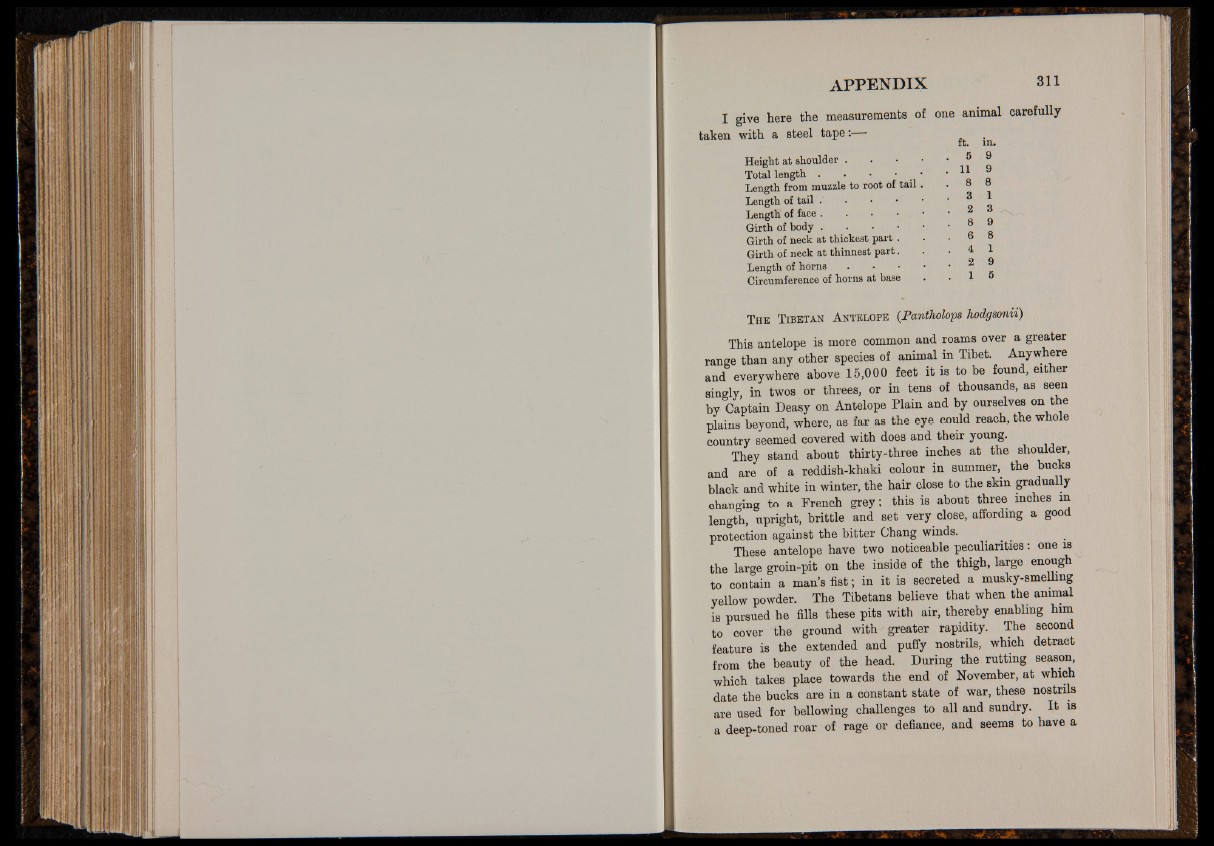
I give here the measurements of one animal
taken with a steel tape:—
Height at shoulder .
Total length •
Length from muzzle to root of tail
Length of tail .
Length of face .
Girth of body .
Girth of neck at thickest part .
Girth of neck at thinnest part.
Length of horns
ft. in.
5 9
1 1 9
8 8
3 1
2 3
8 9
6 8
4 1
2 9
1 5
carefully
The Tibetan A n te lo p e (Pantholops hodgsonii)
This antelope is more common and roams over a greater
range than any other species of animal in Tibet. Anywhere
and everywhere above 15,000 feet it is to be found, either
singly, in twos or threes, or in tens of thousands, as seen
by Captain Deasy on Antelope Plain and by ourselves on the
plains beyond, where, as far as the eye could reach, the whole
country seemed covered with does and their young.
They stand about thirty-three inches at the shoulder,
and are of a reddish-khaki colour in summer, the bucks
black and white in winter, the hair close to the skin gradually
changing to a French grey; this is about three inches m
length, upright, brittle and set very close, affording a good
protection against the bitter Chang winds.
These antelope have two noticeable peculiarities: one is
the large groin-pit on the inside of the thigh, large enough
to contain a man’s fist; in it is secreted a musky-smelling
yellow powder. The Tibetans believe that when the animal
is pursued he fills these pits with air, thereby enabling him
to cover the ground with greater rapidity. The second
feature is the extended and puffy nostrils, which detract
from the beauty of the head. During the rutting season,
which takes place towards the end of November, at which
date the bucks are in a constant state of war, these nostrils
are used for bellowing challenges to all and sundry. It is
a deep-toned roar of rage or defiance, and seems to have a